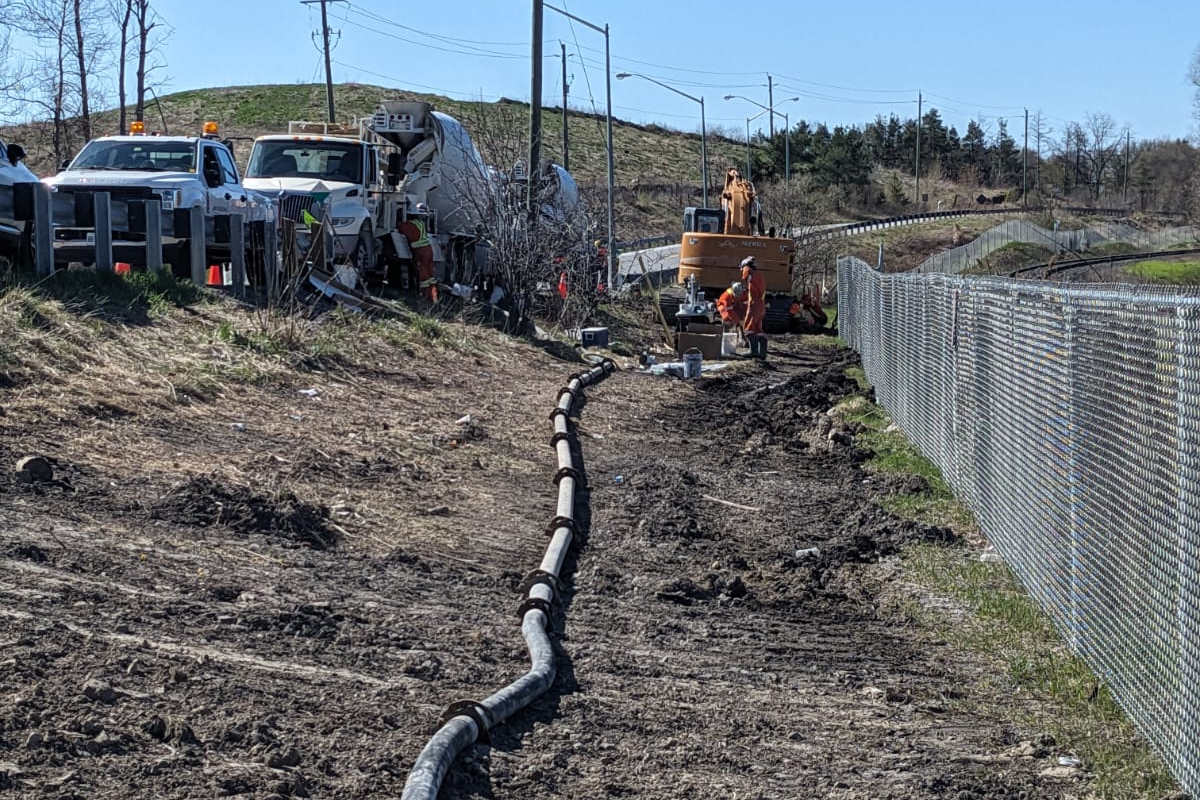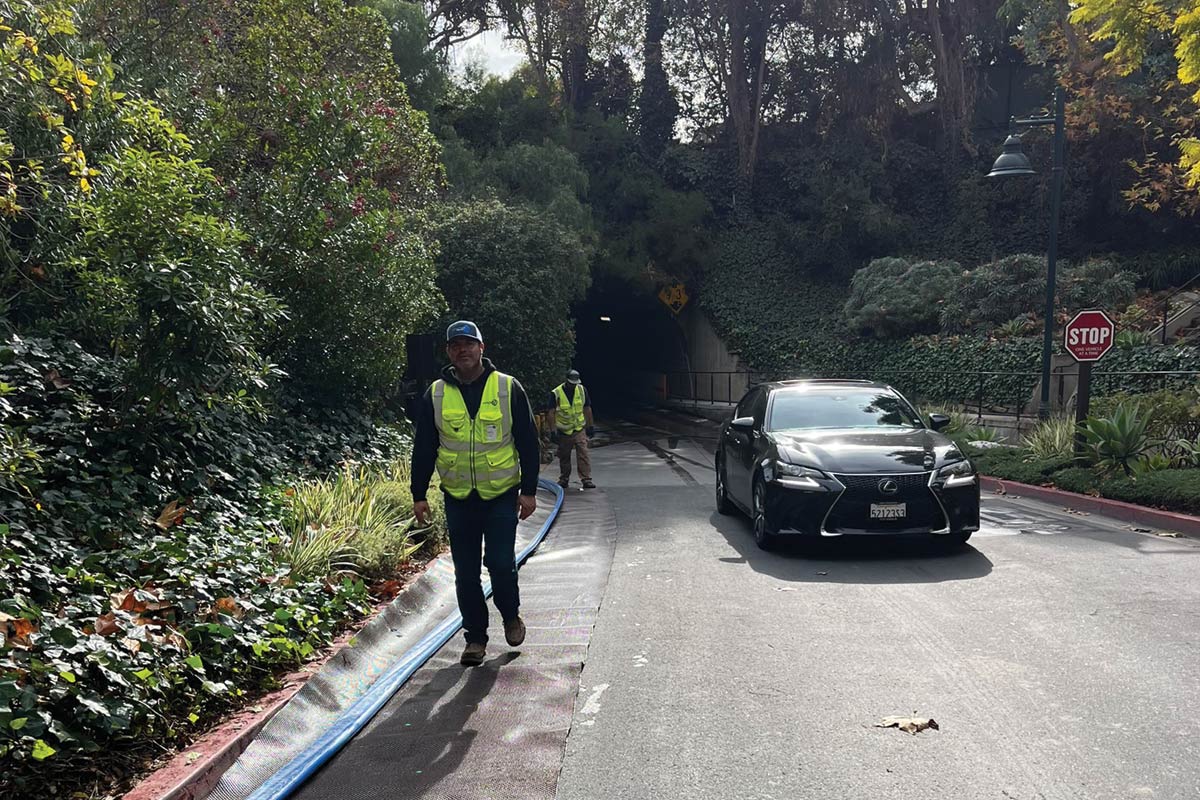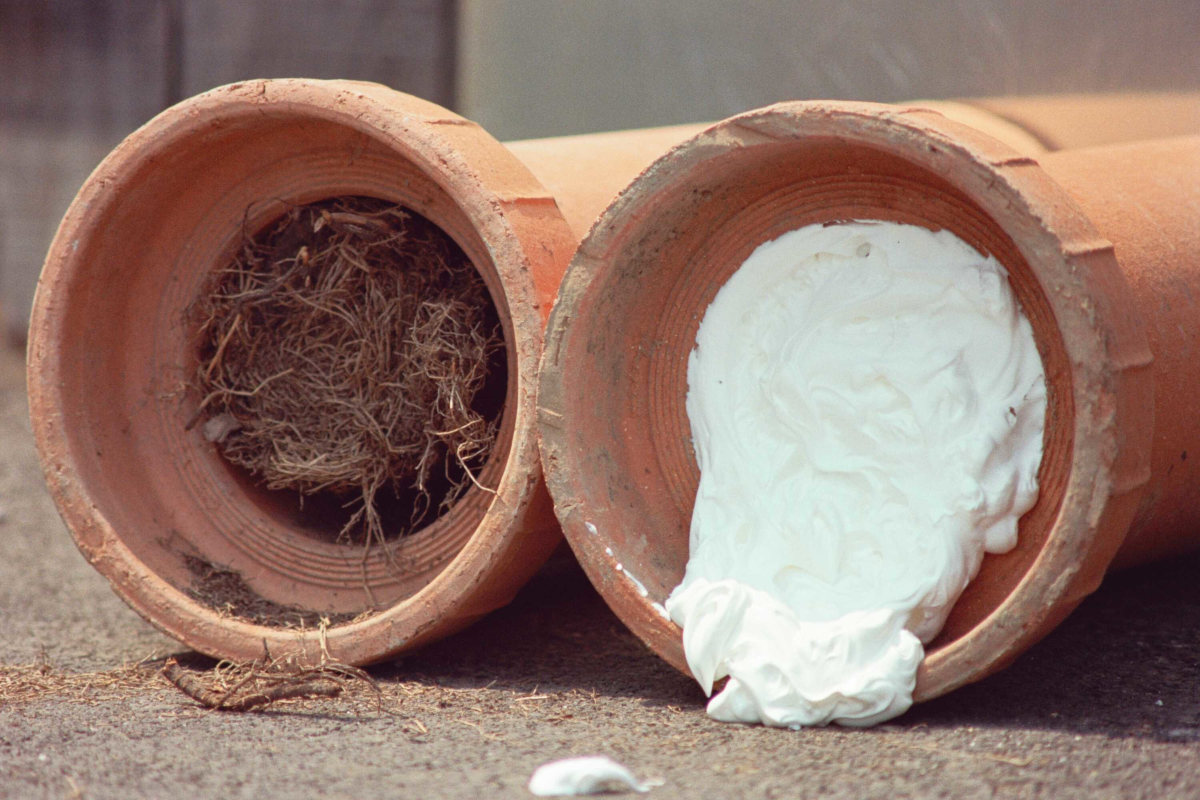
Roberts Onsite Uses Nu Flow Trenchless Sectional Repair
November 3, 2015
Earlier this year, Kitchener, Ontario-based Roberts Onsite turned to trenchless relining when one of its clients fell victim to an accident inside a key manufacturing facility. Roberts Onsite, is a multi-trade contractor charged with keeping the manufacturing facility’s infrastructure running in top shape. In this case, a forklift operator damaged a 14-in. PVC rain leader pipe near the paint shop at Toyota Motor Manufacturing Canada. Roberts Onsite mechanical supervisor Dragan Markov got the call from a plant engineer and jumped into action.
Roberts Onsite, is a multi-trade contractor charged with keeping the manufacturing facility’s infrastructure running in top shape. In this case, a forklift operator damaged a 14-in. PVC rain leader pipe near the paint shop at Toyota Motor Manufacturing Canada. Roberts Onsite mechanical supervisor Dragan Markov got the call from a plant engineer and jumped into action.“Cutting the floor open for a repair was not an option; it was beside a major structural column and in an auto manufacturer’s paint shop, so dust and contamination are enormous risks to their process,” Markov says, adding that the cracks tracked under the concrete floor. Compounding the matter was the fact that the auto manufacturer has strict rules pertaining to performing maintenance work in the shop.
Markov called upon Nu Flow Canada, known for its small-diameter pipe renewal, to assist with the spot repair due to the sensitivity of the environment being near the paint shop, which can’t have intrusion from outside contaminants. This repair marked the second time Roberts Onsite worked with Nu Flow, but it was Markov’s first experience with the company, as well as the trenchless process.
“Because of the sensitivity of the environment, I contacted Nu Flow to assist us in the repair. I was provided with a lot of detailed information to the procedures and materials prior, which I passed on to the client,” Markov says. “That made the preliminary work of setting up the job much smoother. It eased through environmental, engineering and health and safety.”
Based on its contracts, Roberts Onsite provided all the required paperwork (work permits, risk assessments, environmental plans, etc.) provided piping access and patching and Nu Flow Canada served as the subcontractor.
“I hadn’t had any experience with Nu Flow, but others at our company have,” Markov says. “They’ve always done excellent work for us according to the reports I heard from [our] head office.” Nu Flow had done spot repair projects for Roberts Onsite in Cambridge, Ontario.
Despite past positive performance with Nu Flow, working with a company as strict as Toyota, Markov had to provide other assurances for Nu Flow’s work.
“Toyota is very regimented in their processes and expect fairly routine work from us,” Markov says. “Because they are sometimes wary of unfamiliar companies and their services [Nu Flow], I had to lay out some of their background to them.”

Trenchless pipe repair was the right fit for the Toyota plant project because other repair methods would have required the work to be performed when the plant was closed. By Roberts Onsite’s estimates, the cost of that repair would have been three to four times more.
The work took place during plant hours, thanks in part to the trenchless operation’s minimal footprint and the location of the rain leader pipe in an aisle way. Had the break been in a more heavily trafficked area, Toyota requires the work take place during off hours.
Toyota scrutinizes any work done in the paint shop due to the sensitivity of the environment. Nu Flow and Roberts Onsite equipment and tools had to be kept clean upon entry, dust and dirt contamination must be eliminated as much as possible and all workers were required to don lint-free suits and hairnets at all times.
Although the project took place in the middle of a busy factory that makes some of North America’s most popular vehicles, Markov referred to the work area as almost a sterile-like environment.
In all, Nu Flow Canada crews were on-scene for about seven hours repairing the 40-in. section of pipe from the forklift hit to the 90-degree bend beneath the floor. For this project, Nu Flow used its Nu Drain structural liner.
“This was ideal because there isn’t an option for any type of spray on material in the paint shop,” Markov says. “Toyota is very stringent on environmental impacts at their plants, so we had to be cautious about what may be used on their storm drains.”
Nu Drain installations use existing access points and technicians pull or push the epoxy-saturated felt liner into the host pipe. The product provides the ability to line multiple 45- and 90-degree angles, as well as the option of lining specific sections of pipe without lining the entire length.
According to the lead technician on the project for Nu Flow, the work went smoothly with no hiccups and didn’t vary much from other Nu Flow jobs other than the white suits. Once complete, a final leak test and camera inspection was performed and the system is now a smooth, jointless pipe within the existing host pipe.
This project, though small in length, served to highlight the benefits of trenchless repairs.
According to Markov, a full open-cut project would have required plugging the eight roof hoppers connected to this rain leader line. The roof hoppers are located 3 ft from the roof edge and regulations require special tie-offs and restraints be used when working within 10 ft of the roof edge. This also requires additional safety risk assessments through Toyota and is weather dependent. The project also would require dustproof tarping, saw cutting, digging, patch, backfill, concrete and engineering certifications and inspections. Based on the scope of the work Roberts Onsite would have completed the work over a weekend and it would have cost the client three to four times more.
Based on his experience with Nu Flow, and comments from his client, Markov foresees using trenchless repairs again in the future.




